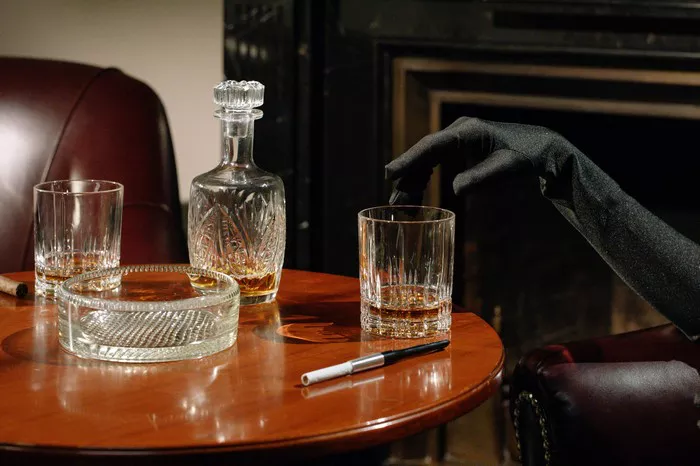The delightful world of cocktails is a realm where creativity knows no bounds. Crafting cocktails in large batches for gatherings or parties often leads to the question, “How many glasses are in a pitcher of cocktails?” Understanding the ideal ratio of ingredients, the size of the pitcher, and the serving size per glass is crucial in ensuring that your concoction not only tastes exquisite but also accommodates the desired number of servings. In this comprehensive guide, we’ll delve into the art and science behind estimating the number of glasses in a pitcher of cocktails and the factors that influence this count.
The Pitcher Size Conundrum: Defining Volumes and Standards
Determining the number of glasses a pitcher of cocktails yields largely depends on the pitcher’s size. Pitchers come in various capacities, ranging from small 32-ounce vessels to larger ones with a capacity of 64 ounces or more. Understanding the standard measurements of liquid volume is fundamental in estimating the quantity of cocktails a pitcher can hold and subsequently, the number of glasses it can fill.
In general, a standard cocktail glass holds around 6 to 8 ounces of liquid. Thus, a 64-ounce pitcher would theoretically hold between 8 to 10 servings of cocktails assuming each glass is filled to the brim. However, this estimation doesn’t account for ice or additional non-alcoholic mixers often added to cocktails.
The Role of Ingredients: Balancing Flavor and Quantity
The composition of a cocktail plays a pivotal role in determining the number of glasses that a pitcher can yield. Cocktails usually consist of a combination of spirits, mixers, and other flavoring agents, which collectively impact the volume of liquid in a pitcher.
Alcoholic beverages like vodka, rum, gin, or tequila contribute to the overall volume in a pitcher. The ratio of alcohol to other ingredients affects the final quantity. For instance, a pitcher containing a higher proportion of spirits will have a lower volume of liquid, resulting in fewer glasses compared to a pitcher with more mixers and non-alcoholic elements.
Additionally, the inclusion of ice significantly affects the final volume of the cocktail. Ice takes up space within the pitcher, displacing the liquid. Therefore, accounting for the ice’s volume is crucial in estimating the number of glasses a pitcher can yield.
Calculating Serving Sizes: Precision in Pouring
Accurately measuring and pouring the ingredients into a pitcher is vital in determining the number of glasses your cocktail batch will yield. A standard serving size for a cocktail is typically considered to be around 1.5 to 2 ounces of alcohol per glass. Mixers and other non-alcoholic components then complement this base spirit.
Careful consideration of the recipe and its measurements allows for a more precise estimation. For instance, if a cocktail recipe calls for 12 ounces of alcohol and 32 ounces of mixers, the total volume of the mixture would be 44 ounces. Assuming an average serving size of 6 ounces per glass, this batch would yield approximately 7 glasses.
Impact of Garnishes and Dilution: Beyond Liquid Volume
Beyond the liquid content, factors like garnishes and dilution also influence the final volume and, consequently, the number of glasses a pitcher of cocktails will yield. Garnishes like citrus slices, herbs, or fruit wedges not only enhance the visual appeal but also displace some liquid within the glass, affecting the overall volume.
Furthermore, dilution occurs as ice melts in the cocktail, altering its concentration and volume. Considering the rate of dilution over time and accounting for it in your estimation is crucial, especially for cocktails served over ice.
Pitcher Shapes and Styles: Affecting Liquid Capacity
Pitchers come in various shapes and styles, which can impact their liquid-holding capacity. While some pitchers are tall and narrow, others are shorter and broader. Understanding the shape and design of the pitcher is essential in estimating the number of glasses it can accommodate.
Tall and narrow pitchers might hold more liquid but could be challenging to pour from, potentially leading to spillage and inaccuracies in serving sizes. Broader pitchers, while possibly holding slightly less liquid, often offer easier pouring and better visibility of the cocktail’s consistency.
Estimation Techniques: Practical Approaches for Precision
Several techniques can help in more accurately estimating the number of glasses a pitcher of cocktails will yield. One approach involves using a measuring cup to fill a standard glass, noting the number of glasses the pitcher contains. This method helps visualize the pour and provides a more accurate estimate based on actual measurements.
Another method involves a preliminary calculation of the cocktail’s total volume based on the recipe’s ingredients, considering the serving size per glass. This approach, while more mathematical, can provide a fairly accurate estimation if the ingredients’ proportions are measured precisely.
Adapting for Variations: Flexibility in Estimation
Flexibility is key when estimating the number of glasses in a pitcher of cocktails. Variations in individual preferences, pouring techniques, and the specific recipe used can lead to slight discrepancies in the final count. Hence, it’s advisable to have a margin of flexibility when calculating the number of servings to ensure you’re well-prepared for unexpected variations.
Moreover, considering the occasion and the guests’ preferences for stronger or milder cocktails might also influence how you prepare and estimate the number of glasses in a pitcher of cocktails.
Conclusion
In conclusion, estimating the number of glasses in a pitcher of cocktails involves a delicate balance of understanding the pitcher’s size, the ingredients’ proportions, serving sizes, and additional factors like ice, garnishes, and dilution. While mathematical calculations and standard measurements provide a baseline estimation, practical approaches and adaptability are crucial in ensuring accuracy when preparing cocktails in batches.
Mastering the art of estimating glasses in a pitcher of cocktails empowers hosts and mixologists to craft delightful concoctions, perfectly tailored for any gathering or occasion, ensuring that each guest is treated to a flavorful and enjoyable experience. Cheers to the perfect pour and the art of mixology!


